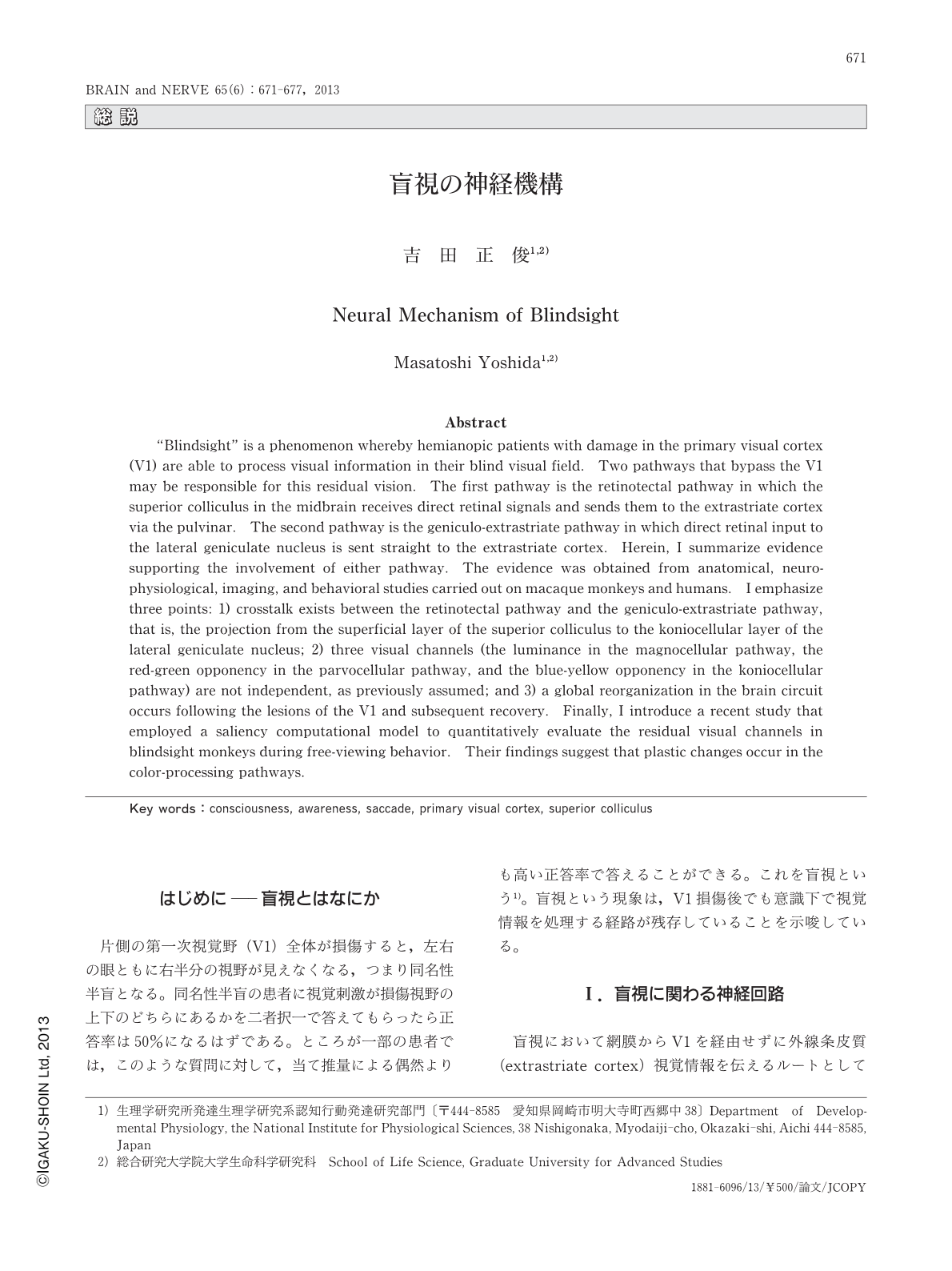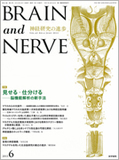Japanese
English
- 有料閲覧
- Abstract 文献概要
- 1ページ目 Look Inside
- 参考文献 Reference
はじめに――盲視とはなにか
片側の第一次視覚野(V1)全体が損傷すると,左右の眼ともに右半分の視野が見えなくなる,つまり同名性半盲となる。同名性半盲の患者に視覚刺激が損傷視野の上下のどちらにあるかを二者択一で答えてもらったら正答率は50%になるはずである。ところが一部の患者では,このような質問に対して,当て推量による偶然よりも高い正答率で答えることができる。これを盲視という1)。盲視という現象は,V1損傷後でも意識下で視覚情報を処理する経路が残存していることを示唆している。
Abstract
"Blindsight" is a phenomenon whereby hemianopic patients with damage in the primary visual cortex (V1) are able to process visual information in their blind visual field. Two pathways that bypass the V1 may be responsible for this residual vision. The first pathway is the retinotectal pathway in which the superior colliculus in the midbrain receives direct retinal signals and sends them to the extrastriate cortex via the pulvinar. The second pathway is the geniculo-extrastriate pathway in which direct retinal input to the lateral geniculate nucleus is sent straight to the extrastriate cortex. Herein, I summarize evidence supporting the involvement of either pathway. The evidence was obtained from anatomical, neurophysiological, imaging, and behavioral studies carried out on macaque monkeys and humans. I emphasize three points: 1) crosstalk exists between the retinotectal pathway and the geniculo-extrastriate pathway, that is, the projection from the superficial layer of the superior colliculus to the koniocellular layer of the lateral geniculate nucleus; 2) three visual channels (the luminance in the magnocellular pathway, the red-green opponency in the parvocellular pathway, and the blue-yellow opponency in the koniocellular pathway) are not independent, as previously assumed; and 3) a global reorganization in the brain circuit occurs following the lesions of the V1 and subsequent recovery. Finally, I introduce a recent study that employed a saliency computational model to quantitatively evaluate the residual visual channels in blindsight monkeys during free-viewing behavior. Their findings suggest that plastic changes occur in the color-processing pathways.

Copyright © 2013, Igaku-Shoin Ltd. All rights reserved.


